ADDICTION
ALCOHOL DEPENDENCE
QUIT SMOKING
ALLERGY
ANTI FUNGAL
FUNGAL INFECTION
FUNGAL NAIL INFECTIONS
ANTI-REJECTION DRUGS
ANTI WORM
ANTIBIOTIC
BACTERIAL INFECTIONS
ARTHRITIS
GOUT
OSTEOARTHRITIS
RHEUMATOID ARTHRITIS
BLOOD
LOW PLATELET COUNT
THROMBOPHLEBITIS
VARICOSE VEINS
COLON
ANAL FISSURE
PILES
ULCERATIVE COLITIS
DIABETES CARE
DIABETES INSIPIDUS
DIABETES TYPE
DIABETIC FOOT ULCERS
GLUCOSE MONITOR
EYES/EAR CARE
DRY EYES
EYE CARE
EYE EXAMINATION
EYE INFECTION
EYE LASHES
EYE PAIN
GLAUCOMA
OCULAR HYPERTENSION
UVEITIS
FEVER CARE
MALARIA
RHEUMATIC FEVER
TYPHOID FEVER
GASTROINTESTINAL
ACIDITY
CONSTIPATION
CROHN'S DISEASE
DIARRHOEA
GALLBLADDER STONES
INTESTINAL ULCERS
IRRITABLE BOWEL SYNDROME
MOTION SICKNESS
NAUSEA
Zoxan Ointment (Ciprofloxacin)
| Active Ingredient (Generic Name): | Ciprofloxacin |
|---|---|
| Indication: | Bacterial Infections |
| Manufacturer: | FDC Ltd |
| Packaging: | 5 gm in one tube |
| Strength: | 0.003 |
From: $36.00
You have been prescribed Zoxan ointment, a topical antibiotic that contains ciprofloxacin. This ointment is used to treat bacterial eye infections such as conjunctivitis. It is available in a 3.5-gram tube and is effective against both Gram-positive and Gram-negative bacteria. Ciprofloxacin works by inhibiting bacterial DNA replication, which helps reduce bacterial levels and alleviate symptoms. Apply a thin layer of the ointment to the affected area two to three times a day, as directed by your doctor. Make sure to complete the full treatment course as prescribed for optimal results. With proper use, you can expect to see improvement in your symptoms. Further details on how to safely and effectively use Zoxan ointment will be provided as you continue reading.
Main Points
- Zoxan ointment contains ciprofloxacin and is utilized for treating bacterial eye infections such as conjunctivitis.
- The ointment is available in a 3.5-gram tube, sterile, white, and opaque, targeting both Gram-positive and Gram-negative bacteria.
- Ciprofloxacin functions by hindering bacterial DNA replication through its action on DNA gyrase, reducing bacterial levels and easing symptoms.
- Application involves a thin layer on the affected area two to three times daily, with hand washing before and after use.
- Potential side effects include mild itching or redness, while severe allergic reactions are uncommon; discontinue use and seek medical help if severe symptoms manifest.
What Is Zoxan Ointment?
Zoxan ointment is a topical antibiotic containing ciprofloxacin, used to treat bacterial infections like conjunctivitis. It is applied externally only and should not be consumed or used on open wounds. The ointment comes in a 3.5-gram tube and is sterile, white, and opaque. It effectively targets a variety of Gram-positive and Gram-negative bacteria commonly found in bacterial conjunctivitis. Follow your doctor’s advice and the product instructions for proper application and dosage.
How Does Zoxan Ointment Work?
Ciprofloxacin in Zoxan ointment inhibits bacterial DNA replication by targeting DNA gyrase, a crucial enzyme for bacterial growth. By disrupting this enzyme responsible for unwinding DNA during replication, ciprofloxacin hinders bacterial multiplication. This action reduces bacterial levels, easing symptoms and supporting healing. When applied topically, ciprofloxacin in Zoxan ointment penetrates the skin to the infection site, where it disrupts bacterial cells’ replication and survival. This targeted approach minimizes damage to healthy skin cells. The sustained release of ciprofloxacin in the ointment ensures a prolonged effective concentration at the infection site, aiding bacterial eradication for faster recovery and reduced treatment failure risk.
Uses and Indications
You may be considering Zoxan Ointment for its therapeutic properties, as it is a topical antibiotic designed to treat bacterial infections effectively. This ointment is suitable for skin infections and wounds, aiding in wound healing and symptom relief related to bacterial infections.
Bacterial Infection Treatment
Zoxan ointment is prescribed for bacterial infections of the eye and eyelid, such as conjunctivitis and blepharitis. It is a topical antibiotic effective against various bacterial strains causing eye infections. When used as directed, Zoxan ointment can help reduce symptoms like redness, swelling, and discharge. Following the dosage instructions and completing the full treatment course is crucial for complete clearance of the infection. Expect improvement in symptoms and a decrease in infection severity with proper use of Zoxan ointment.
Skin Infection Therapy
Zoxan ointment is effective for treating skin infections caused by susceptible strains of certain bacteria. It helps reduce the severity of superficial skin infections by inhibiting bacterial growth. Common skin infections that can be treated with Zoxan ointment include impetigo, folliculitis, carbuncles, furuncles, and infected skin abrasions or lacerations.
Wound Healing Aid
Zoxan ointment promotes a bacterial-static environment, aiding in wound healing by supporting the body’s natural repair processes. This topical application containing ciprofloxacin, an antibacterial agent, inhibits bacterial growth, facilitating faster recovery and reducing infection risks. It is beneficial for managing various types of wounds like ulcers for quicker closure, burns for scar reduction, lacerations for improved tissue repair, and surgical wounds for decreased chances of surgical site infection.
Dosage and Administration
Apply a thin layer of Ciprofloxacin ointment to the affected area, covering it completely, typically two to three times daily or as instructed by your healthcare provider. It is essential to adhere to the dosage instructions to ensure effective treatment and reduce the risk of adverse reactions.
When applying the ointment, remember to:
- Wash your hands thoroughly before and after application
- Clean and dry the affected area before applying the ointment
- Avoid applying the ointment to broken or damaged skin
- Do not combine the ointment with other topical products without consulting your healthcare provider
- Discontinue use and seek medical advice if you encounter any signs of skin irritation or allergy
Complete the full treatment course as prescribed, even if symptoms improve before finishing the medication. For any queries or concerns regarding the use of Ciprofloxacin ointment, seek guidance from your doctor or pharmacist.
Side Effects and Warnings
Ciprofloxacin ointment may cause mild to moderate side effects like itching, redness, or a burning sensation at the application site, typically resolving on their own. Some discomfort or irritation may occur at the site of application, but these reactions are generally temporary and not severe.
In rare instances, more severe side effects like a severe allergic reaction may occur, presenting as hives, breathing difficulties, or swelling of the face, lips, tongue, or throat. If these symptoms appear, seek immediate medical attention. Discontinue the ointment and consult your doctor if you notice signs of infection such as increased redness, swelling, or pus at the application site.
Adhering to the prescribed dosage and administration instructions is essential to reduce the risk of side effects. If you have any concerns or questions about symptoms, consult your doctor or pharmacist for guidance on managing side effects and ensuring safe and effective use of the ointment.
Precautions and Interactions
When using Zoxan ointment, it is important to be cautious and mindful of potential interactions with other medications or medical conditions that could impact its effectiveness or increase the risk of adverse effects. It is crucial to disclose all current medications, supplements, and vitamins to your healthcare provider to prevent possible interactions.
Some considerations regarding precautions and interactions include:
- Tretinoin: Avoid combining Zoxan ointment with tretinoin to reduce the risk of skin irritation and allergic responses.
- Oral anticoagulants: The use of Ciprofloxacin with oral anticoagulants like warfarin may heighten the risk of bleeding.
- Cyclosporine: Concurrent use of cyclosporine with Zoxan ointment may raise the likelihood of seizures.
- Theophylline: Ciprofloxacin could elevate the levels of theophylline in the bloodstream, potentially causing toxicity.
- Pregnancy and breastfeeding: Zoxan ointment is classified as category C for pregnancy and category D for breastfeeding. Consult your healthcare provider before using this medication.
Always adhere to the guidance provided by your doctor and seek clarification if you have any concerns or queries about using Zoxan ointment.
Storage and Disposal
Proper storage and disposal of Zoxan ointment is crucial for maintaining its effectiveness and preventing harm. Store the ointment in a tightly sealed container in a cool, dry place away from sunlight, moisture, and out of reach of children. The recommended storage temperature is between 15?C to 30?C (59?F to 86?F). Avoid freezing the ointment as it may compromise its quality.
When discarding Zoxan ointment, do not flush it down the toilet or drain. Instead, utilize a pharmaceutical take-back program or follow the disposal instructions from your pharmacist or local waste management authorities. If unsure, seek guidance from your healthcare provider or pharmacist. Proper disposal is essential to prevent environmental contamination and accidental exposure. Adhering to these storage and disposal guidelines will ensure the safe and effective use of Zoxan ointment.
Frequently Asked Questions
Can I Use Zoxan Ointment on Open Wounds or Cuts?
When dealing with open wounds or cuts, it’s important to prioritize healing and prevent infection. It is generally best to avoid using antibiotic ointments on deep, open wounds or cuts that are bleeding heavily. Instead, focus on maintaining cleanliness and dryness in the area to aid in the healing process. For personalized advice on the most suitable treatment for your specific wound, seek guidance from a healthcare professional.
Is Zoxan Ointment Safe for Use on Children Under 2 Years?
When considering the use of an antibiotic ointment on children under 2 years old, it is generally not recommended due to their developing skin and potential allergic reactions. Always consult a pediatrician before applying any medication to a child’s wound to ensure their sensitive skin is cared for properly. If prescribed, it is important to follow the doctor’s instructions carefully to prioritize the child’s safety.
It is not recommended to share prescription medications, including topical ointments, with others. Each individual’s medical condition and history are unique, and sharing medications can result in ineffective treatment, allergic reactions, or adverse interactions. It is advisable for your family member or friend to seek personalized guidance and treatment from their doctor or pharmacist.
Will Zoxan Ointment Affect My Pregnancy or Breastfeeding?
When pregnant or breastfeeding, it’s essential to consider the impact of medication. Generally, antibiotics like ciprofloxacin are not recommended during pregnancy or breastfeeding due to potential effects on fetal development or presence in breast milk. Consulting your healthcare provider is crucial to assess the specific risks and benefits of your treatment. They will provide guidance to help you make an informed decision.
Can I Use Zoxan Ointment to Treat Viral or Fungal Infections?
Zoxan Ointment is not suitable for treating viral or fungal infections. Antibacterial ointments like Zoxan, including Ciprofloxacin, are ineffective against viruses and may exacerbate fungal infections. It is important to accurately diagnose the type of infection you have and use the appropriate treatment. Using the wrong medication can prolong recovery time and contribute to drug resistance. Consult a healthcare professional to determine the most effective treatment for your specific condition.
Conclusion
Proper adherence to Zoxan ointment, a topical antibiotic with ciprofloxacin, is essential. Follow the dosage and administration instructions diligently to effectively treat bacterial conjunctivitis. Be aware of potential side effects, warnings, and interactions to ensure safe usage. By following these guidelines, you can effectively manage your condition and reduce the risk of complications.
Based on 0 reviews
Only logged in customers who have purchased this product may leave a review.

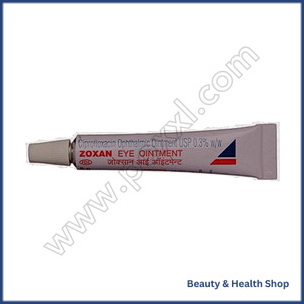
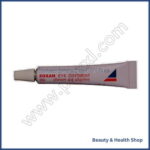

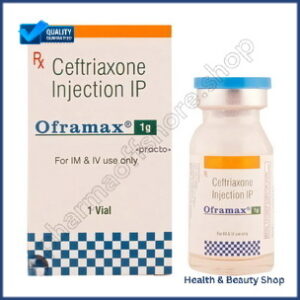
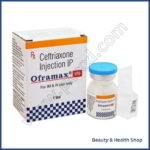
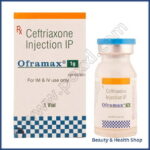
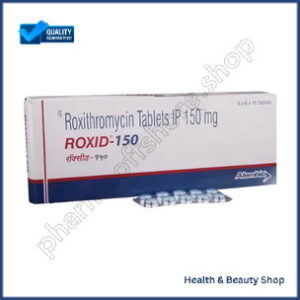
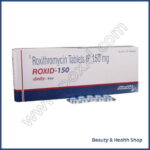
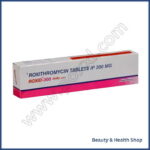
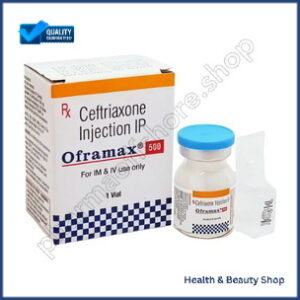
There are no reviews yet.